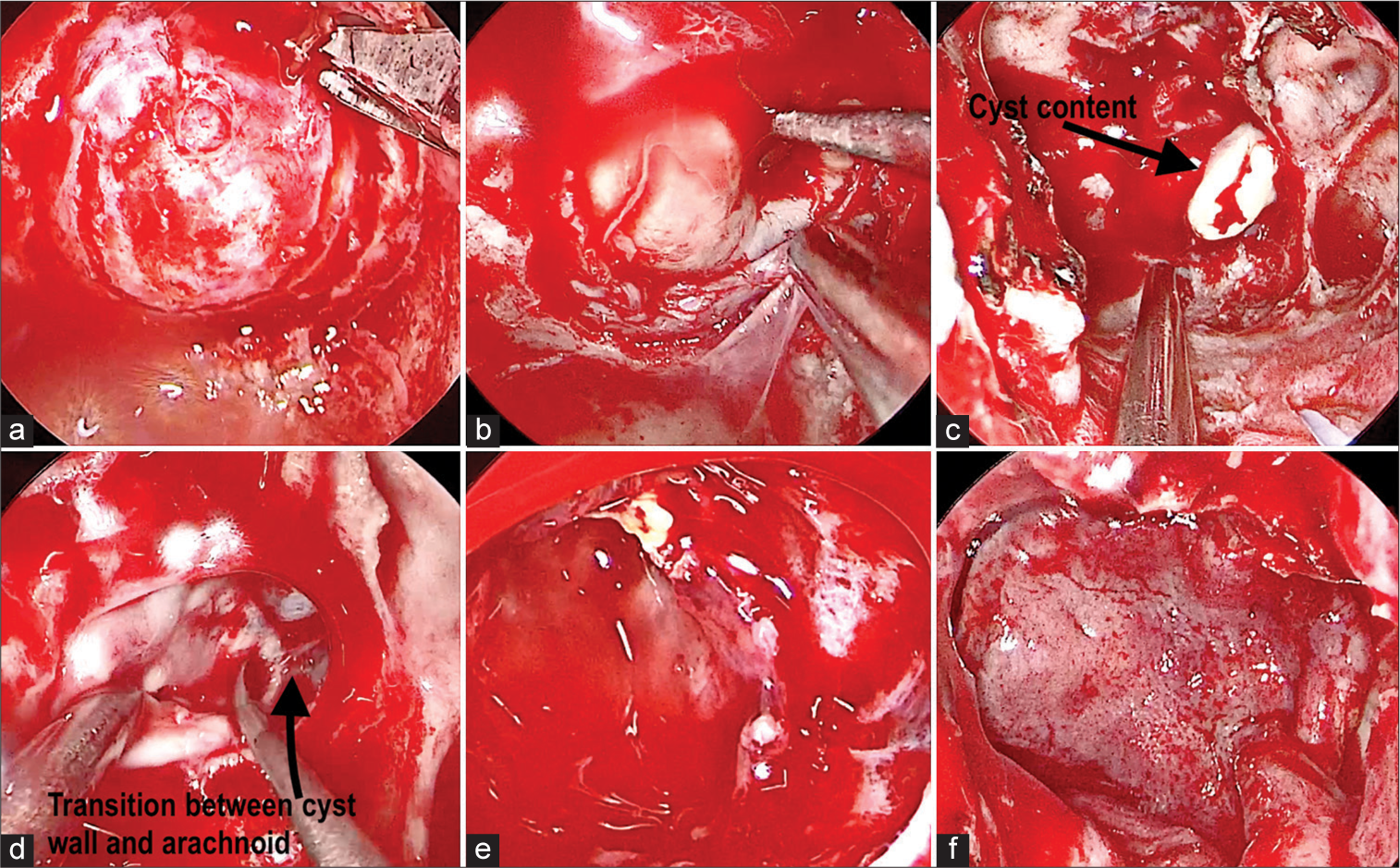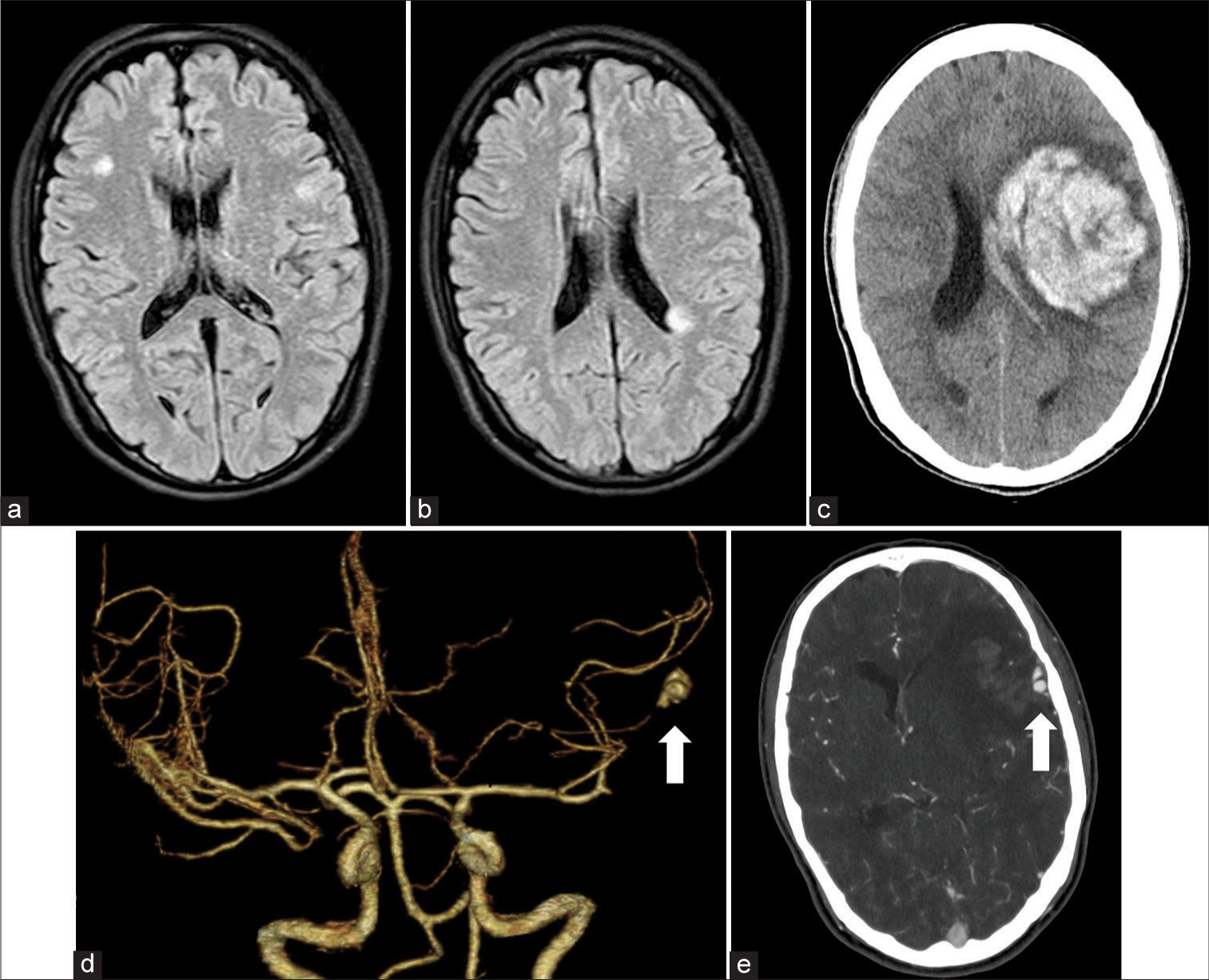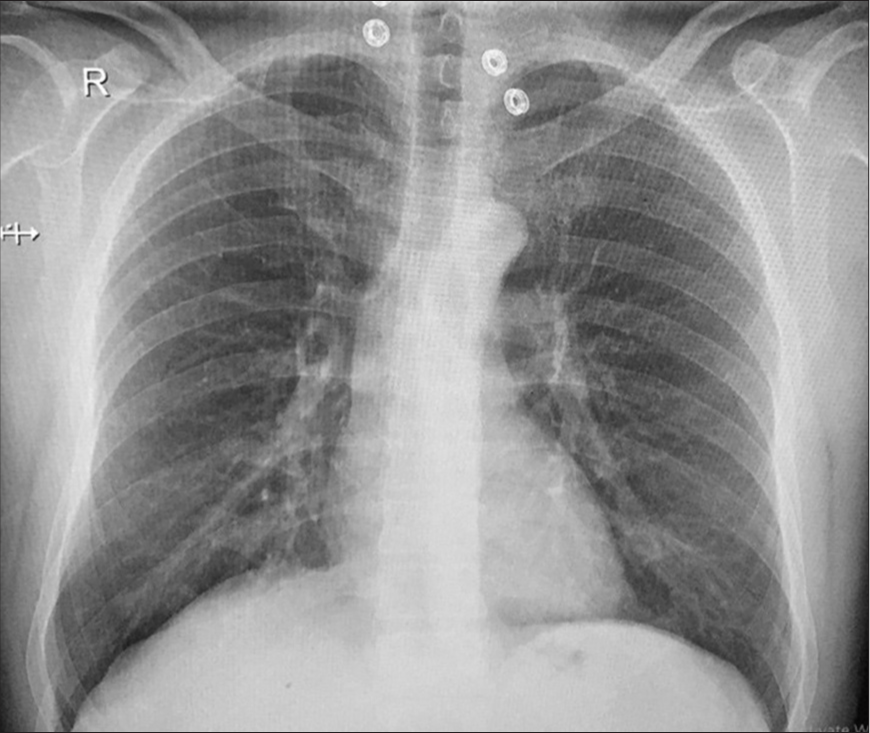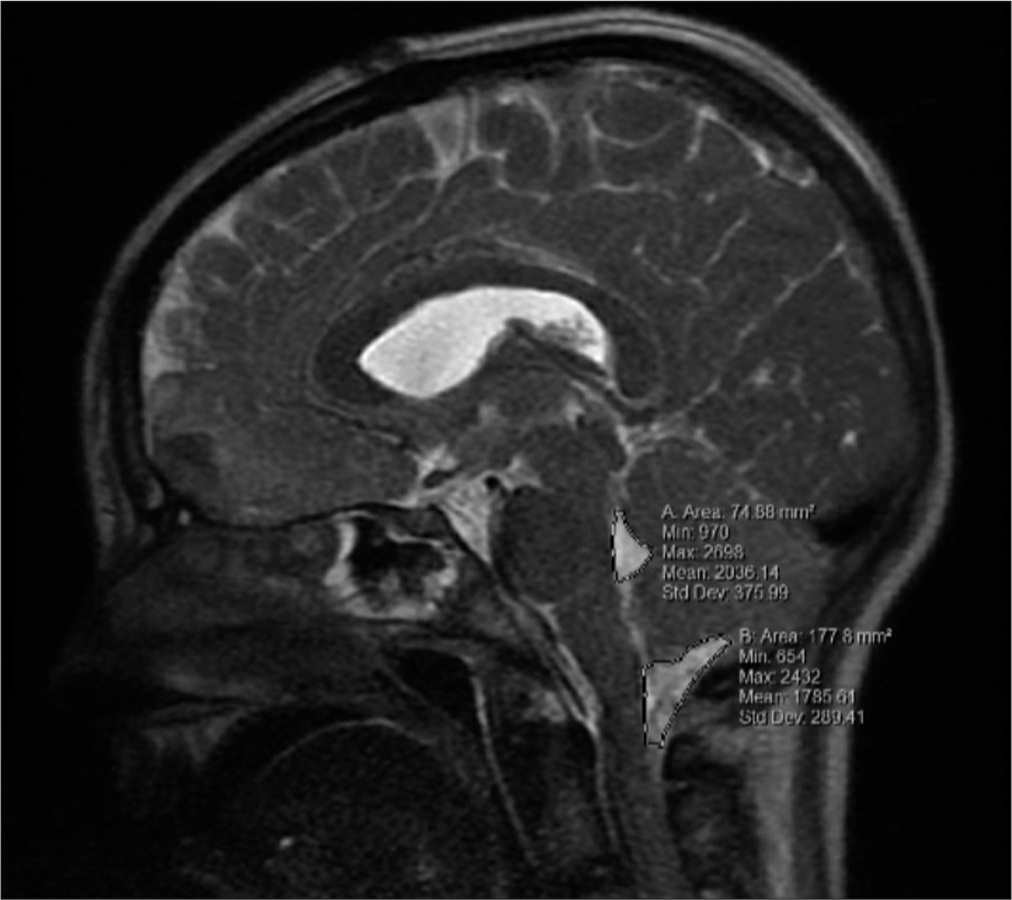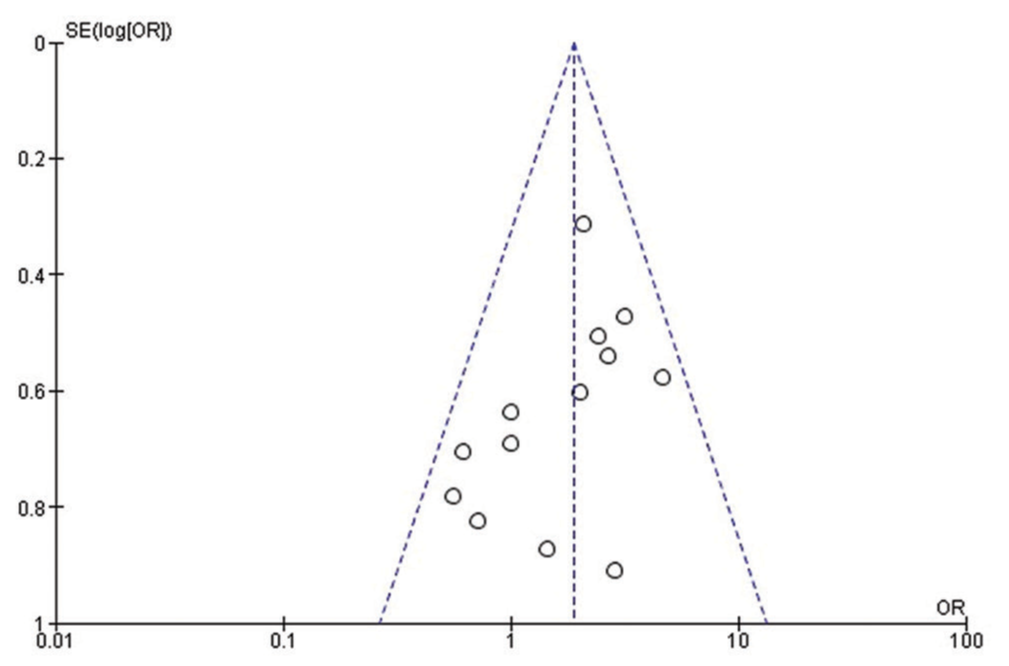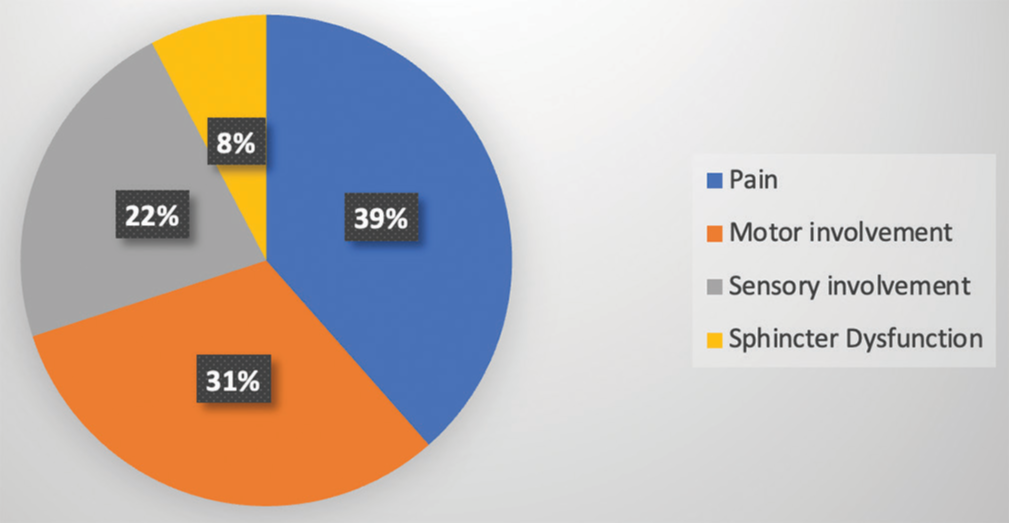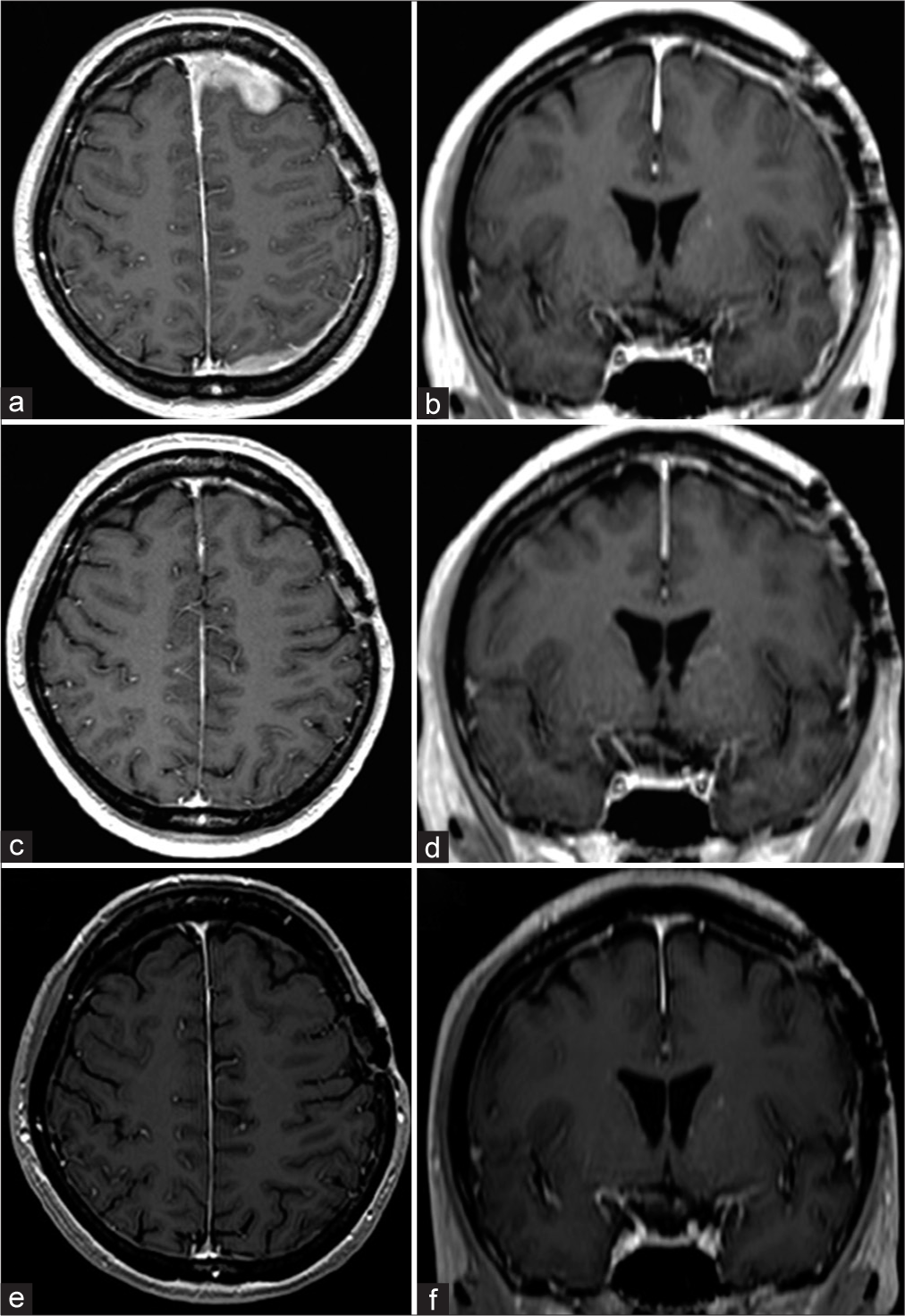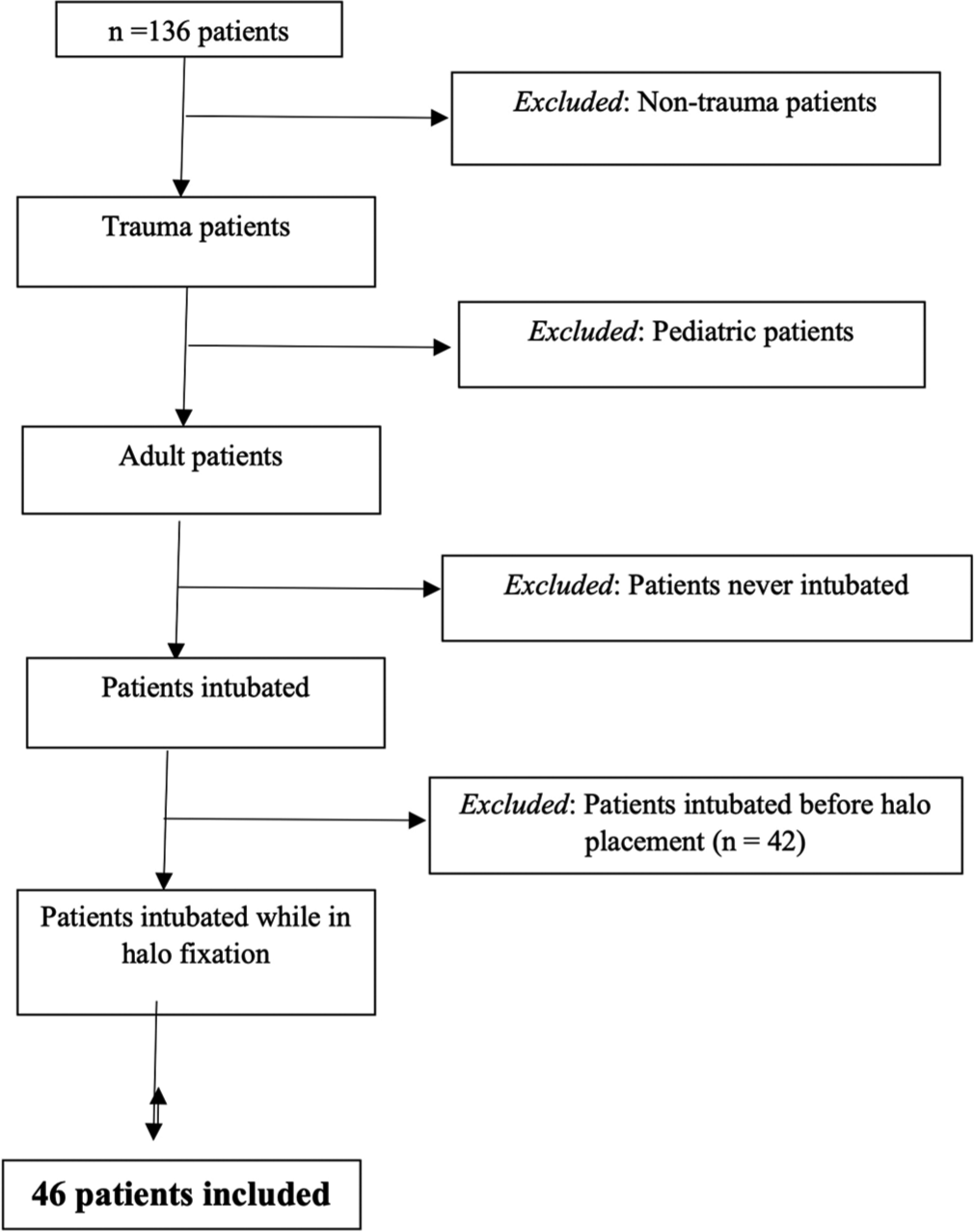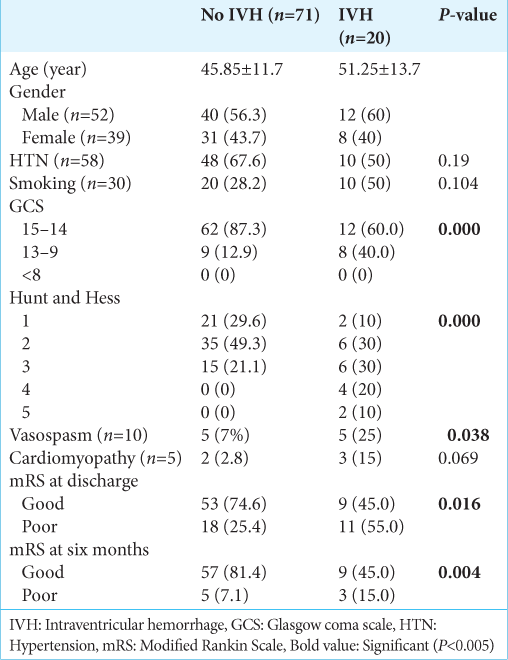A case of bilateral vertebral artery dissection treated by bilateral surgical occlusion and low-flow bypass
Date of publication: 05-Apr-2024
Background: Bilateral vertebral artery dissection aneurysm (VADA) is a rare condition that leads to severe stroke. However, the surgical strategy for its treatment is controversial because the pathology is very complicated and varies in each case. Here, we report a case of bilateral VADA that was successfully treated with staged bilateral VADA occlusion and low-flow bypass.
Accurate preoperative diagnosis of a Rathke cleft cyst with the aid of a novel classification for sellar cystic lesions and a diagnostic algorithm decision: Tools for differentiating cystic sellar lesions with a representative case
Date of publication: 05-Apr-2024
Background: Rathke’s cleft cyst (RCC) is a benign lesion in the sellar and suprasellar compartments. Similarly, pituitary adenomas can present with cystic morphology, making it a differential diagnosis when evaluating a patient with a cystic lesion in the sellar region. Surgical goals differ between RCCs and pituitary adenomas as the first can achieve remission of symptoms with cyst decompression in contrast to pituitary adenomas where complete resection would be the main goal. Imaging analysis alone may not be sufficient to define a preoperative surgical plan. The combination of imaging and conjoined use of validated tools may provide valuable insights to the clinician when defining a surgical approach.
Intracranial mycotic aneurysm rupture following cupping therapy
Date of publication: 05-Apr-2024
Background: Cupping therapy is an alternative treatment that uses a small glass cup to suck the skin with a needle and has been used to manage skin problems and pain. However, serious complications have been reported. Herein, we describe a case of intracranial mycotic aneurysm rupture after cupping therapy.
Tuberculoma mimicking en-plaque meningioma in a 45-year-old male: A case report
Date of publication: 05-Apr-2024
Background: Tuberculoma mimicking en-plaque meningioma is a rare variant of tuberculoma. A few cases were reported in the literature. The radiological appearance can be mistakenly diagnosed as en-plaque meningioma.
Prognostic and morphological factors in pediatric cerebellar contusions
Date of publication: 05-Apr-2024
Background: Although uncommon, cerebellar contusions are associated with significant morbidity and mortality. Literature is lacking in the prognostic and morphological factors relating to their clinical picture and outcomes, especially within children. The objective of this study is to evaluate prognostic and anatomic factors in the clinical picture of cerebellar contusions, including effacement of the 4th ventricle and cisterna magna.
Comparing equiosmolar hypertonic saline and mannitol for achieving brain relaxation in elective craniotomy patients: A systematic review and meta-analysis
Date of publication: 05-Apr-2024
Background: This study strives to provide a current and thorough assessment of the comparative efficacy and safety between equiosmolar quantities of hypertonic saline (HS) and mannitol in facilitating brain relaxation for patients undergoing elective craniotomies.
Functional outcomes in intradural extramedullary spinal tumors
Date of publication: 05-Apr-2024
Background: Intradural extramedullary (IDEM) spinal cord tumors account for approximately two-thirds of benign intraspinal neoplasms. These are amenable to gross total excision but can have variable functional outcomes, which plays a key role in assessing their impact on a patient’s quality of life. Understanding the functional outcomes associated with these tumors is crucial for healthcare professionals to devise appropriate treatment plans and provide comprehensive care.
Primary extranodal marginal zone mucosa-associated lymphoid tissue-type B-cell lymphoma involving the dura: A case report
Date of publication: 29-Mar-2024
Background: Primary extranodal marginal zone mucosa-associated lymphoid tissue-type B-cell lymphoma (EMZMBCL), which presents as a dural mass, is a rare intracranial tumor that mimics a subdural hematoma or meningioma.
Airway risk associated with patients in halo fixation
Date of publication: 29-Mar-2024
Background: The halo fixation device introduces a significant obstacle for clinicians attempting to secure a definitive airway in trauma patients with cervical spine injuries. The authors sought to determine the airway-related mortality rate of adult trauma patients in halo fixation requiring endotracheal intubation.
Analysis of the impact of intraventricular hemorrhage on the functional outcome of ruptured anterior cerebral artery aneurysm after clipping
Date of publication: 29-Mar-2024
Background: Various clinical symptoms and variables have been suggested as potential indicators of outcomes in patients with subarachnoid hemorrhage (SAH) resulting from ruptured intracranial aneurysms. The detailed discussion of the consequences of intraventricular hemorrhage (IVH), frequently reported in cases of anterior communicating artery (ACoA) aneurysms, is still pending. The study aimed to assess the results of aneurysm surgery performed early versus delayed in patients with SAH, specifically focusing on the occurrence of IVH.



